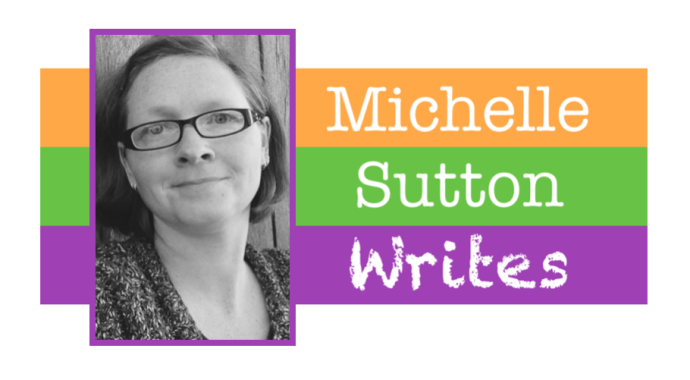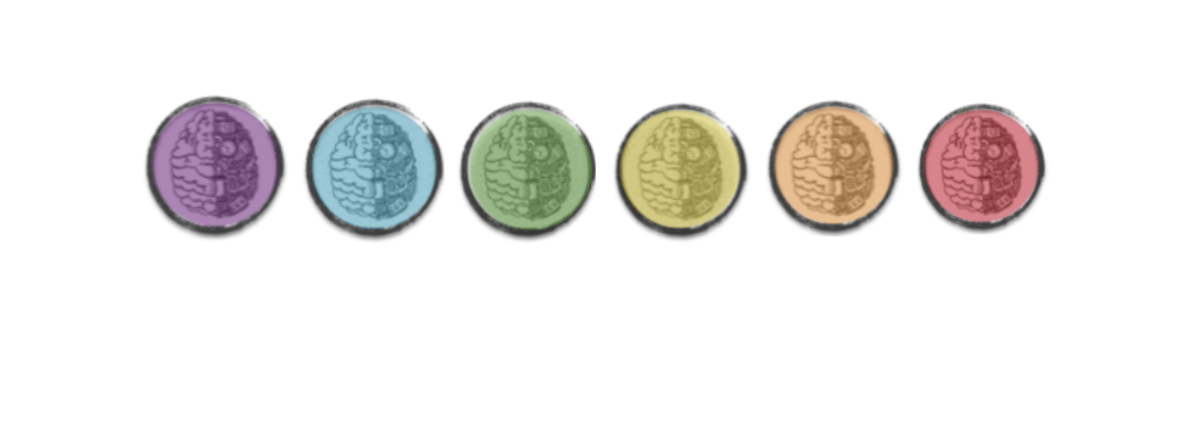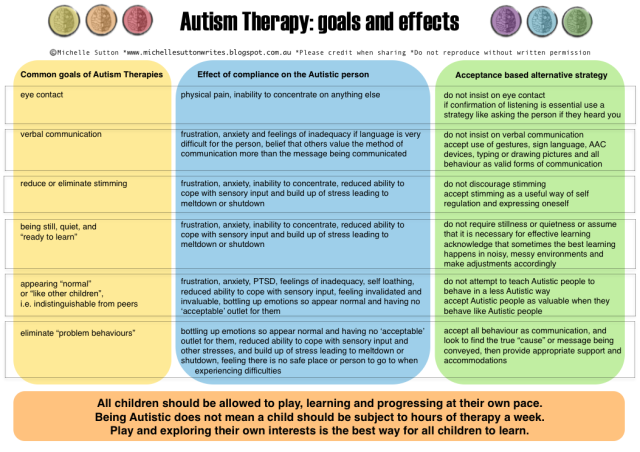There are many therapies and strategies designed to be used with Autistic children. Many of them, including ones like Positive Behaviour Support which is said to be a good method for support children in schools, are mostly just ways to encourage (or force) compliance for the convenience of educators. This is damaging for Autistic students, and many other students as well, and I believe these strategies need to challenged.
As with all my infographics, the information below is not intended to be seen as an exhaustive list, but as a starting point for conversation.
I am happy for people to share the image, but please credit me and link back to this article, or to my Facebook page when you do. If you wish to print the image or otherwise reproduce it for your own use, please click here for access to the downloadable PDFs.
There is an image description following the image.
Image title: Autism Therapy: goals and effects
Copyright statement:
©Michelle Sutton *www.michellesuttonwrites.blogspot.com.au *Please credit when sharing *Do not reproduce without written permission
The image contains 3 coloured boxes set out as three columns. The box on the left is yellow and is titled “Common goals of Autism Therapies“. The box in the middle is blue and is titles “Effect of compliance on the Autistic person“. The box on the right is green and is titled “Acceptance based alternative strategy“.
Information is set out across the coloured columns as follows:
Goal
eye contact
Effect
physical pain, inability to concentrate on anything else
Alternative
do not insist on eye contact
if confirmation of listening is essential use a strategy like asking the person in they heard you
Goal
verbal communication
Effect
frustration, anxiety and feelings of inadequacy if language is very difficult for the person, belief that others value the method of communication more than the message being communicated
Alternative
do not insist on verbal communication
accept use of gestures, sign language, AAC devices, typing or drawing pictures and all behaviour as valid forms of communication
Goal
reduce or eliminate stimming
Effect
frustration, anxiety, inability to concentrate, reduced ability to cope with sensory input and build up of stress leading to meltdown or shutdown
Alternative
do not discourage stimming
accept stimming as a useful way of self regulation and expressing oneself
Goal
being still, quiet and “ready to learn”
Effect
frustration, anxiety, inability to concentrate, reduced ability to cope with sensory input and build up of stress leading to meltdown or shutdown
Alternative
do not require stillness or quietness or assume that it is necessary for effective learning
acknowledge that sometimes the best learning happens in noisy, messy environments and make adjustments accordingly
Goal
appearing “normal” or “like other children”
i.e. indistinguishable from peers
Effect
frustration, anxiety, PTSD, feelings of inadequacy, self loathing, reduced ability to cope with sensory input, feeling invalidated and invaluable, bottling up emotions so appear normal and having no ‘acceptable’ outlet for them
Alternative
do not attempt to teach Autistic people to behave in a less Autistic way
accpet Autistic people as valuable when they behave like Autistic people
Goal
eliminate “problem behaviours”
Effect
bottling up emotions so appear normal and having no ‘acceptable’ outlet for them, reduced ability to cope with sensory input and other stresses, and build up of stress leading to meltdown or shut down, feeling there no safe place or person to go to when experiencing difficulties
Alternative
accept all behaviour as communication, and look to find the true “cause’ or message being conveyed, then provide appropriate support and accommodations
At the bottom of the image is an orange box that contains the words
All children should be allowed to play, learning and progressing at their own pace.
Being Autistic does not mean a child should be subject to hours of therapy a week.
Play and exploring their own interests is the best way for all children to learn.



the link to your facebook page doesn’t seem to be working. thanks for creating this awesome resource!
LikeLike
Thanks for the heads up- all fixed now
LikeLike